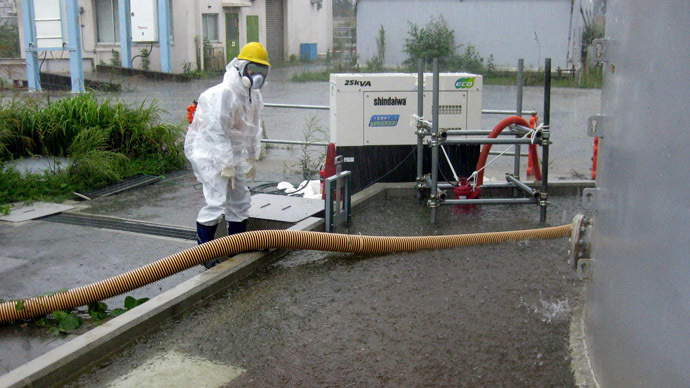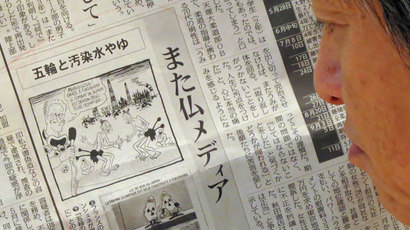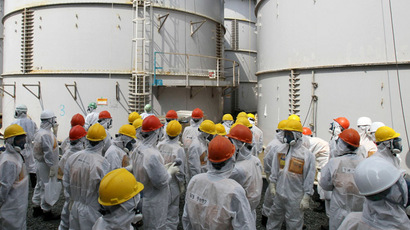Japan dismissed US warnings to contain radioactive water at Fukushima

Japanese authorities ignored US calls to contain contaminated water at the stricken Fukushima power plant in 2008, officials told media. The revelation comes as the Japanese battle to stem radioactive water leaks flooding into the sea from the facility.
Tokyo Electric Power (TEPCO) estimates that 300 metric tons of
groundwater has mixed with radioactive material at the site and
is steadily flowing out to sea. Water needs to be constantly
pumped over the stricken reactors at the Fukushima site to
prevent them from overheating.
Four hundred metric tons of groundwater runs into the nuclear
facility from higher ground every day, TEPCO estimates. Japanese
authorities have so far been unable to stem the flow, although it
turns out they were aware of the threat groundwater posed back in
2011 in the wake of the tsunami that decimated the facility.
Two officials dealing with the cleanup operation told Reuters
that TEPCO had ignored warnings from US experts over the need to
control contaminated water at the site. A plan to construct a
barrier to prevent the groundwater from entering Fukushima was
proposed as early as April 2011.
“It was obvious to us that there was great deal of groundwater
intrusion into the plant, and we shared that with the Japanese
government,” said Charles Casto, a representative of the US
Nuclear Regulatory Commission (NRC) who was based in Tokyo from
March 2011 to early 2012.
TEPCO chose to disregard the idea because the potential cost of
constructing the barrier would have had an impact on investor
confidence. A TEPCO memo obtained by Reuters that was sent to
Japanese officials in June 2011 said the expense of constructing
a barrier would fuel fears of imminent bankruptcy.
"Cost wasn't the only reason for not moving ahead," said
Yoshikazu Nagai, a spokesman for TEPCO.
"The wall raised a number of technical questions that made it
unclear whether it was feasible. For that reason, there was
concern that it would be recognized as a liability and push the
company closer to insolvency," said Nagai, adding that levels
of radiation were still too high at the site to begin
construction so soon.
Japanese PM orders decommissioning of reactors
Japanese Prime Minister Shinzo Abe visited the Fukushima plant on
Thursday and ordered the two nuclear reactors at the site, which
were not damaged by the 2011 quake, to be decommissioned. He also
stood by his earlier pledges and said the area would be safe and
stable in time for the 2020 Olympics in Tokyo.
“I will work hard to counter rumors questioning the safety of
the Fukushima plant,” he said to press on Thursday. Abe has
sort to downplay the threat of the radiation at Fukushima,
assuring Olympic Chiefs at a press conference in Buenos Aires two
weeks ago that the situation was “under control.”
Abe also promised to "solve the problem of leakage of
radioactive water by the end of March 2014."
PM's statements were later contradicted by TEPCO official Kazuhiko Yamashita.
Later on Thursday, a TEPCO representative told ITAR-TASS that the company plans to clean up all the contaminated water at the Fukushima plant by April 2015. “The President of the company said that contaminated water will be cleaned by the end of the financial year 2014 [April 2015],” stated the source.
The source also revealed that TEPCO is betting on a system called ‘ALPS’ to clean the water off all the radioactive substances. The system has only been running in a test-mode so far and was interrupted in August, after a fresh leak released 300 tons of radioactive water.
A TEPCO representative said the system is set to resume work in test-mode at the end of this month and will require at least another three months to complete the test.
In the meantime, the Japanese government pledged hundreds of
millions of dollars earlier this month to construct a “frozen
earth” wall around the reactors to help contain the leaks.














